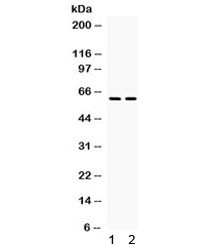Cookie preferences
This website uses cookies, which are necessary for the technical operation of the website and are always set. Other cookies, which increase the comfort when using this website, are used for direct advertising or to facilitate interaction with other websites and social networks, are only set with your consent.
Configuration
Technically required
These cookies are necessary for the basic functions of the shop.
"Allow all cookies" cookie
"Decline all cookies" cookie
CSRF token
Cookie preferences
Currency change
Customer-specific caching
FACT-Finder tracking
Individual prices
Selected shop
Session
Comfort functions
These cookies are used to make the shopping experience even more appealing, for example for the recognition of the visitor.
Note
Show the facebook fanpage in the right blod sidebar
Statistics & Tracking
Affiliate program
Conversion and usertracking via Google Tag Manager
Track device being used

| Item number | Size | Datasheet | Manual | SDS | Delivery time | Quantity | Price |
|---|---|---|---|---|---|---|---|
| NSJ-R32178 | 100 µg | - | - |
3 - 10 business days* |
755.00€
|
If you have any questions, please use our Contact Form.
You can also order by e-mail: info@biomol.com
Larger quantity required? Request bulk
You can also order by e-mail: info@biomol.com
Larger quantity required? Request bulk
0.5mg/ml if reconstituted with 0.2ml sterile DI water. RELB (v-rel reticuloendotheliosis viral... more
Product information "Anti-RelB"
0.5mg/ml if reconstituted with 0.2ml sterile DI water. RELB (v-rel reticuloendotheliosis viral oncogene homolog B) is also known as IREL. The International Radiation Hybrid Mapping Consortium assigned the RELB gene to chromosome 19. By RT-PCR and immunocytochemical analyses, Clark et al. (1999) showed that RELB expression correlated with dendritic cell activation. NF-kappa-B-inducing kinase is required for osteoclastogenesis in response to pathologic stimuli. Vaira et al. (2008) found that overexpression of Relb, but not Rela, rescued differentiation of mouse Nik -/- osteoclast precursors, indicating that blockade of the alternative NF-kappa-B pathway, rather than the classical NF-kappa-B pathway, is responsible for the osteoclastogenic defect in the absence of Nik. Using Relb -/- mice, they showed that Relb itself was required for Rankl-induced osteoclastogenesis in vitro and for TNF-induced bone resorption in vivo. Both Relb -/- and Nik -/- mice were resistant to tumor-mediated osteolysis. Vaira et al. (2008) concluded that the alternative NF-kappa-B pathway, via RELB, plays an essential and unique role in RANKL signaling toward osteoclast development. Protein function: NF-kappa-B is a pleiotropic transcription factor which is present in almost all cell types and is involved in many biological processed such as inflammation, immunity, differentiation, cell growth, tumorigenesis and apoptosis. NF- kappa-B is a homo- or heterodimeric complex formed by the Rel-like domain-containing proteins RELA/p65, RELB, NFKB1/p105, NFKB1/p50, REL and NFKB2/p52. The dimers bind at kappa-B sites in the DNA of their target genes and the individual dimers have distinct preferences for different kappa-B sites that they can bind with distinguishable affinity and specificity. Different dimer combinations act as transcriptional activators or repressors, respectively. NF-kappa-B is controlled by various mechanisms of post-translational modification and subcellular compartmentalization as well as by interactions with other cofactors or corepressors. NF-kappa-B complexes are held in the cytoplasm in an inactive state complexed with members of the NF- kappa-B inhibitor (I-kappa-B) family. In a conventional activation pathway, I-kappa-B is phosphorylated by I-kappa-B kinases (IKKs) in response to different activators, subsequently degraded thus liberating the active NF-kappa-B complex which translocates to the nucleus. NF-kappa-B heterodimeric RelB-p50 and RelB-p52 complexes are transcriptional activators. RELB neither associates with DNA nor with RELA/p65 or REL. Stimulates promoter activity in the presence of NFKB2/p49. As a member of the NUPR1/RELB/IER3 survival pathway, may provide pancreatic ductal adenocarcinoma with remarkable resistance to cell stress, such as starvation or gemcitabine treatment. Regulates the circadian clock by repressing the transcriptional activator activity of the CLOCK-ARNTL/BMAL1 heterodimer in a CRY1/CRY2 independent manner. Increased repression of the heterodimer is seen in the presence of NFKB2/p52. [The UniProt Consortium]
| Keywords: | Anti-RELB, Anti-I-Rel, Anti-Transcription factor RelB, RelB Antibody |
| Supplier: | NSJ Bioreagents |
| Supplier-Nr: | R32178 |
Properties
| Application: | WB |
| Antibody Type: | Polyclonal |
| Conjugate: | No |
| Host: | Rabbit |
| Species reactivity: | human |
| Immunogen: | Amino acids RHSFNNLGIQCVRKKEIEAAIERKIQLGIDPYNA of human RELB were used as the immunogen for the Rel-B antibody. |
| Format: | Purified |
Database Information
| KEGG ID : | K09253 | Matching products |
| UniProt ID : | Q01201 | Matching products |
| Gene ID | GeneID 5971 | Matching products |
Handling & Safety
| Storage: | -20°C |
| Shipping: | -20°C (International: -20°C) |
Caution
Our products are for laboratory research use only: Not for administration to humans!
Our products are for laboratory research use only: Not for administration to humans!
Information about the product reference will follow.
more
You will get a certificate here
Viewed






